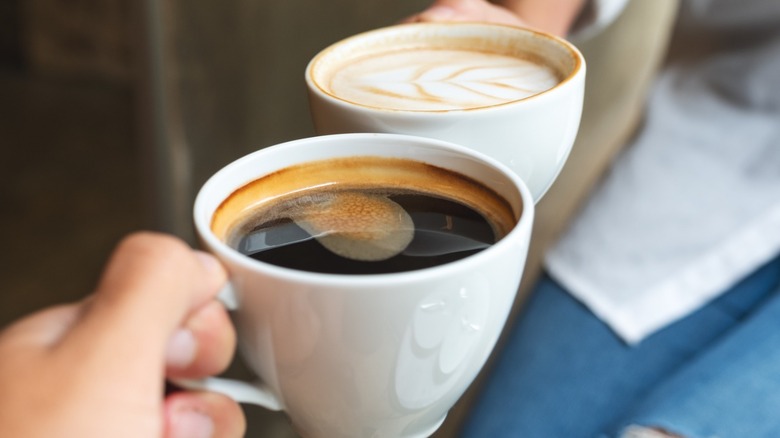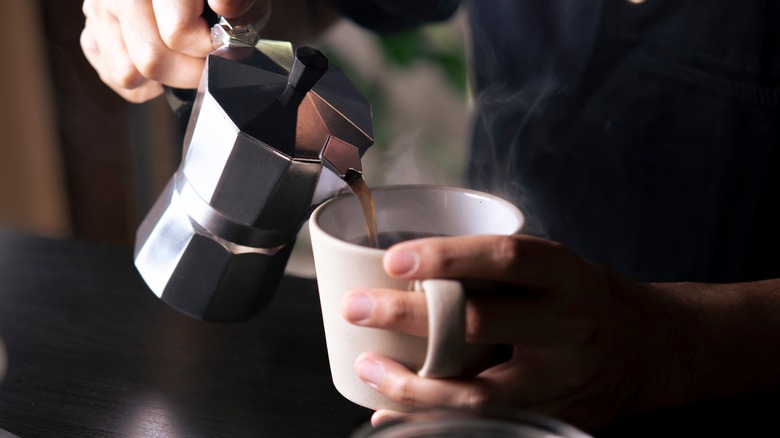To Enjoy Your Coffee More, Try Drinking It Like Wine
Many of us pop a pod in our automated coffee maker and chug it down without much regard for how it tastes. But for folks who want to embrace living slowly and savoring the little moments throughout the day, that can start with a morning cup of coffee. Instead of just slinging back a double shot of espresso, why not experience your coffee like a nice glass of wine?
Plenty of wine enthusiasts take their time studying the aroma of a vintage, carefully swirling it in the glass, taking note of the terroir, the material of the barrels the wine aged in, and so on. That same approach can be applied toward any type of coffee, whether it's a cup of drip, a frothy cappuccino, or some scalding hot espresso. To give coffee a similar consideration as wine, look into where the beans came from, whether the coffee is a single origin or a blend, and the roasting process. Each of these factors can drastically alter the flavor and balance of your coffee, and taking the time to experience them can lead to a better coffee-drinking experience overall — rather than a mere caffeine buzz.
What does all the coffee jargon mean?
To flex your coffee-enthusiast muscles, there are some terms and concepts you'll want to become familiar with. The first is terroir, which means earth or soil, a word that is also used in reference to wine. But beyond the actual dirt the coffee plant grows in, terroir also refers to the region, climate, and other environmental considerations that contribute to the flavor of the coffee fruit. For instance, Ethiopian coffee tends to have berry-forward, almost wine-like notes, while Brazilian beans hold richer, more chocolatey flavors. These tastes can even vary within a single country, changing slightly from region to region.
On the topic of origin, perhaps the biggest impact on coffee flavor is whether the beans are single-origin or blended. Single-origin coffee means that the coffee has come from a single harvesting site. Blends can source from many sites, including totally separate countries. In addition to the importance of the terroir, single-origin and blended coffees typically go through very different roasting processes (though that is changing all the time, like when it comes to Nordic-style coffee). Because roasters want to keep the delicate flavors of single-origin beans, they typically undergo a shorter roasting time, which gives us light or medium roasts. Blends, meanwhile, are typically roasted into deep medium or dark roasts, as the extra roasting time helps the different flavors meld into one, losing some of their unique tasting notes in the process.

